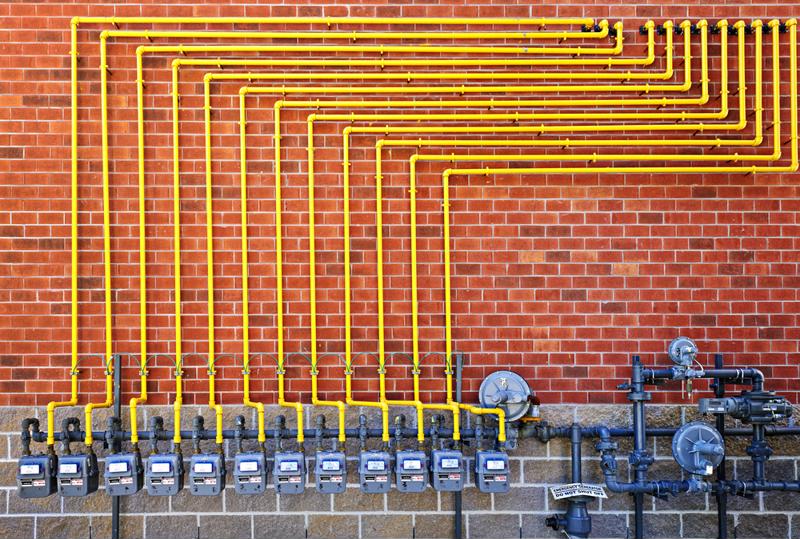
What IoT applications mean for commercial facility management
By Max BurkhalterMay 7, 2019
As internet of things technology continues to permeate every industrial and commercial landscape, the question of its long-term viability has grown increasingly immaterial. Despite the significant security concerns involved in widespread IoT integration, many companies are determined to push the boundaries of embedded tech and data analysis to their absolute limits. While most of the innovation in the IoT market has focused on streamlining manufacturing processes and improving fleet management, recent advances have also allowed facility supervisors to revolutionized their workflows.
By outfitting their commercial and residential properties with an array of environmental sensors, facility management companies are able to precisely monitor and control temperature, humidity and energy consumption on behalf of their tenants. Although this may seem like a minor improvement, it has enabled a new level of resource efficiency that could pave the way to the smart cities of the future.
The benefits of IoT-powered facility management
Over the past few years, companies and consumers have become progressively concerned about energy waste, pollution and rising utility costs. This trend has put a lot of pressure on facility managers to optimize their practices and offer the type of real-time response capabilities that end users have come to expect. Considering the average building wastes close to 30% of the energy it consumes, per the U.S. Environmental Protection Agency, there's never been a more opportune time to leverage advanced data gathering and analysis tools to secure lasting results. That said, achieving sustainable productivity gains comes at a cost, as the upfront procurement and installation fees of IoT devices can be quite steep, especially for small-scale operations.
Although minor players in the facility management space may be inclined to take a slow-roll approach, larger companies can have a massive impact on energy waste without taking on exorbitant financial risk. The EPA estimates that just 5 million buildings in the U.S. are responsible for nearly 20% of the nation's energy use and greenhouse gas emissions, costing an average of $100 billion per year. What's more, the U.S. Department of Energy reports that commercial buildings (in particular) account for 18% of U.S. carbon dioxide emissions and absorb almost 19% of the nation's primary energy.

While IoT cannot completely mitigate the energy needs of commercial buildings and industrial manufacturing plants, it can provide facility managers with the sort of digital-based capabilities that will reduce waste and ensure efficient energy consumption. At present, these improvements are dependent on large-scale connected networks that are able to consolidate massive quantities of data from disparate systems and IoT-enabled objects. The collected data can be analyzed to generate actionable insights into specific infrastructure-based vulnerabilities, utility equipment performance and environmental factors that may impact a facility's energy usage. Armed with this knowledge, facility managers are able to streamline their operations and maintenance activities in a way that is both efficient and profitable. Generally speaking, the merger of IoT devices and data analysis software allows facility managers to:
- Reduce maintenance costs
- Customize their services
- Forecast energy consumption
- Mitigate environmental-based risks
- Optimize resource management
- Evaluate system performance
According to a study from the American Council for an Energy-Efficient Economy, companies can save anywhere from 30% to 50% of their energy by using integrated smart-building systems. This can free up more operational spending for research and development projects and workflow optimization, though IoT tools require a strong network foundation to operate reliably in the long term.
IoT use cases in facility management
One of the things that makes IoT technology so valuable for facility management is its near limitless implementation potential. Almost any device can be added to the overarching network by installing a wireless sensor, though it's often impractical to equip every object with transmitting capabilities. That said, facility supervisors can significantly reduce energy waste by identifying key infrastructure and equipment that play a direct role in their properties' daily operations, such as thermostats, light fixtures, ventilation and heating systems. Some specific use cases include:
- Smart energy meters: These intuitive utility hubs allow facility managers to track electricity usage in real-time, enabling more precise control on both the micro and macro levels. When paired with a fleet of environmental sensors, smart meters can be used to locate the exact source of energy waste, whether its a poorly insulated window frame or a malfunctioning appliance. They can also help managers customize energy distribution for large buildings that have disparate operational environments and cut down on after-hours waste.
- Predictive maintenance tools: Outfitting plumbing, electricity and HVAC equipment with embedded sensors can keep facility managers aware of any performance irregularities that may cause wider issues if left unattended. This enables more proactive maintenance scheduling and reduces costly breakdowns that would otherwise cause excessive disruption to the building's normal operations.
Facility managers who are rolling out cutting-edge IoT solutions must first ensure their systems and network infrastructures are reliable and scalable, as subpar equipment can prevent them from enjoying the benefits IoT offers. Perle offers high-performance networking tools that can keep commercial buildings operating at peak efficiency. Read some of our customer stories to find out how we've helped other organizations optimize their facility management.



